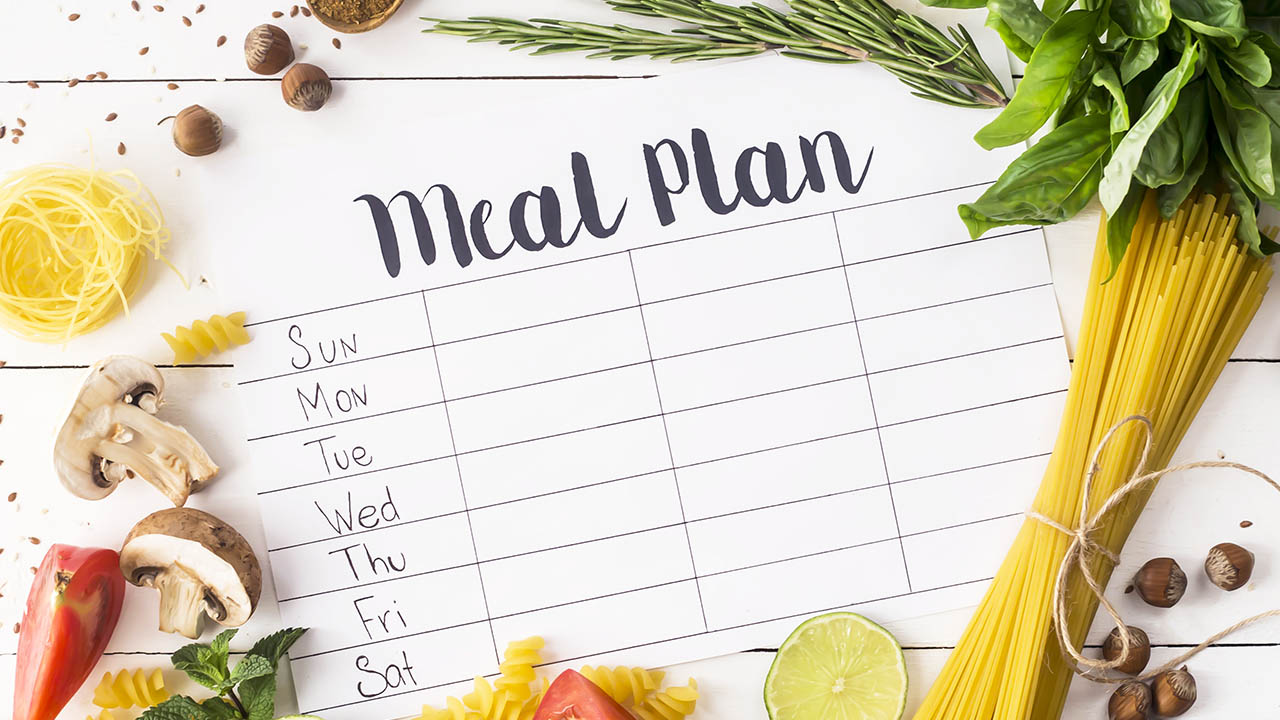Health and Fitness: Meal planning and prep
 CREDIT: ISTOCK (UNDEFINED UNDEFINED)
CREDIT: ISTOCK (UNDEFINED UNDEFINED)Having trouble with weekly meal planning? Try these tips and tricks.
Would you eat healthier if you had more time? More money? More culinary skills? What if I can grant you these three wishes in the next several paragraphs?
While I’m not a genie or a witch, I’ve spent a long time coming up with more efficient ways to meal plan and prepare meals. I have a very busy and active lifestyle and I have a family to feed. Through many years of trail and error on my own, with two of us and now with two little boys, I have found the secret sauce that works to make sure we all get fed healthy meals and under budget.
Here is the recipe:
1. Choose a day/time every week that you do the following steps. Ideally this is the day before or early in the day you are going to get some groceries. Making this a habit at this same time will be the first step in getting organized and staying on track.
2. Search your home. Make a list of foods you have on hand that need to be used up. I’m not talking about pantry staples that can last for a while (although you should be aware of expiry dates and use up things). Look in the freezer and fridge and at some dry goods that you can make a list of and see how they fit into a meal or snack. Even if you live in residence at the school, you still might have a few things that need to be eaten up or tossed out.
3. Get rid of junk. If you have it one hand, you’ll eat it. Throw it out, bring it to a party, start adding it to gifts, or melt it into art. If you have a tendency to give into junk food temptation, take it out of sight, out of mind.
4. Write out a plan that starts today. Let’s say today is Saturday: What do you have on hand that needs to be used up? Can you make a healthy meal out of it? Do you need to go to a store and get something to add to it?
Next, take a look at your list from step two and form a plan based on your schedule. I like to write out all my dinner meals for the week first. Here is an example:
Sunday: steamed broccoli & cauliflower with chicken, brown and wild rice.
Monday: I work late so I bring leftovers from Saturday dinner or make a salad or soup, and then I have a meal ready for my family (this week is a healthy version of mac & cheese with lightly sautéed ham, broccoli, peas and carrots).
Tuesday: homemade burgers (meat or plant based) on lettuce wrap or whole grain bun and baked home cut fries.
Wednesday: I work until dinnertime so I bring salad and leftover burger or chicken I roasted on the weekend and my family has crockpot chili and bun.
Thursday: I work late so I have leftover chili or toss together a stir fry with some leftovers, and my family has our healthy version of tacos or taco salad.
Friday: homemade pizza on whole grain crust or zucchini boats.
Saturday: roast with root vegetables and green beans. Lunches consist of leftovers that are portioned out into individual containers, salad, soups, wraps, or veggies with hummus and side of cut-up cold meat and cheese with crackers.
Breakfasts for this week are:
Sunday: veggie omelette and bacon or turkey.
Monday: homemade protein waffles with fruit.
Tuesday: porridge or smoothie bowl.
Wednesday: eggs, fruit and whole grain toast.
Thursday: leftover protein waffles or pancakes with yogurt and fruit.
Friday: porridge or smoothie bowl.
Saturday: smoothies or leftover protein pancakes with homemade apple sauce and nuts.
Snacks consist of veggies and hummus, protein chia or hemp pudding, fruit and nuts, Greek yogurt and fruit with no sugar granola, homemade healthy muffins, homemade protein bars, air popped pop corn, tortilla chips and salsa.
This seems like a lot but it really is simpler than it looks. We try to make enough of something so that we purposefully use the leftovers for a time in the week when we are short on time and need to just put the containers in a cooler bag to go. I also try to bake or home-make something every other weekend for snacks and at least one meal every 10 days or so is from the crock pot.
We eat about ¼ that day, portion out a few for a meal later in the week and then freeze the rest in individual containers to have on a day when we are running low on groceries and or time and can just take it out and heat it up.
5. Now that you have your meal plan (or maybe you can try mine!), it’s time to make your grocery list. Start with the produce in each meal and snack and count the servings you will need. Work your way through each section as if you are in the grocery store: produce, bakery, meat, fridge and freezer, dry goods, cans, etc.
One really great way to make a list is to use a grocery store app from Walmart, Superstore or wherever you regularly shop. I use Walmart because they don’t charge for grocery pick-up and it is generally less expensive if you stay away from most of the pre-made packaged items. Even if you don’t end up ordering from the app, this helps you to see quantities and also keeps a running estimated total so you know if you are staying on budget.
6. Order or buy the groceries. I love ordering. You need to give about eight to 10 hours notice and it saves so much time. Then you can just pull up in one of the reserved spots (even in an Uber or cab) and in under 10 minutes they will be out with your groceries for you. It also saves you from making impulse purchases. If this is not your thing, go in the store, but stick to your list!! Race through like you are on that Guy’s Grocery Games. Get only what you need.
7. Come home and organize. Organize your items that you will be using first to the front and the rest to the back. If you are shopping with a parent/family member and then bringing food to school for the week, you may need to spend a bit of time doing some prep work to only bring what you need. If you are shopping for yourself and keeping it in your own home, then don’t fret about prepping every meal. Just prep for the things you know you won’t have time for during the week.
8. Having a dining-out plan. If you like to eat at restaurants or you have a meal plan card with the school, no problem. I have a “Healthy Eating on Campus” presentation posted to our website (Programs and Resources at studentwellnesscentre. ca) that can help you out with this.
You can also build things into your meal plan. For instance: Monday lunch: wrap; Monday dinner: Stir fry; Tuesday lunch: soup; Tuesday dinner: sushi and veggies, etc.
9. Stick to you plan, but have back up plans for when you have to change something because of a schedule change.
10. Eat healthy at least 80 to 90 per cent of the time with lots of vegetables, fruits, lean proteins, whole grains, nuts, seeds and water to drink.
If you need help with nutrition coaching, come and see us in the Student Wellness Centre or book a consultation via our app: Fanshawe Student Wellness Centre.















